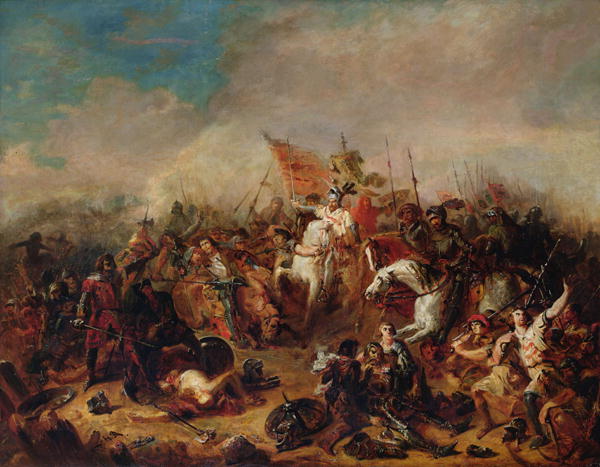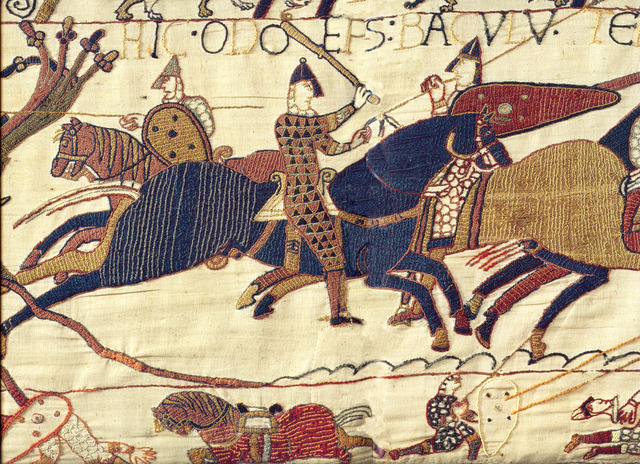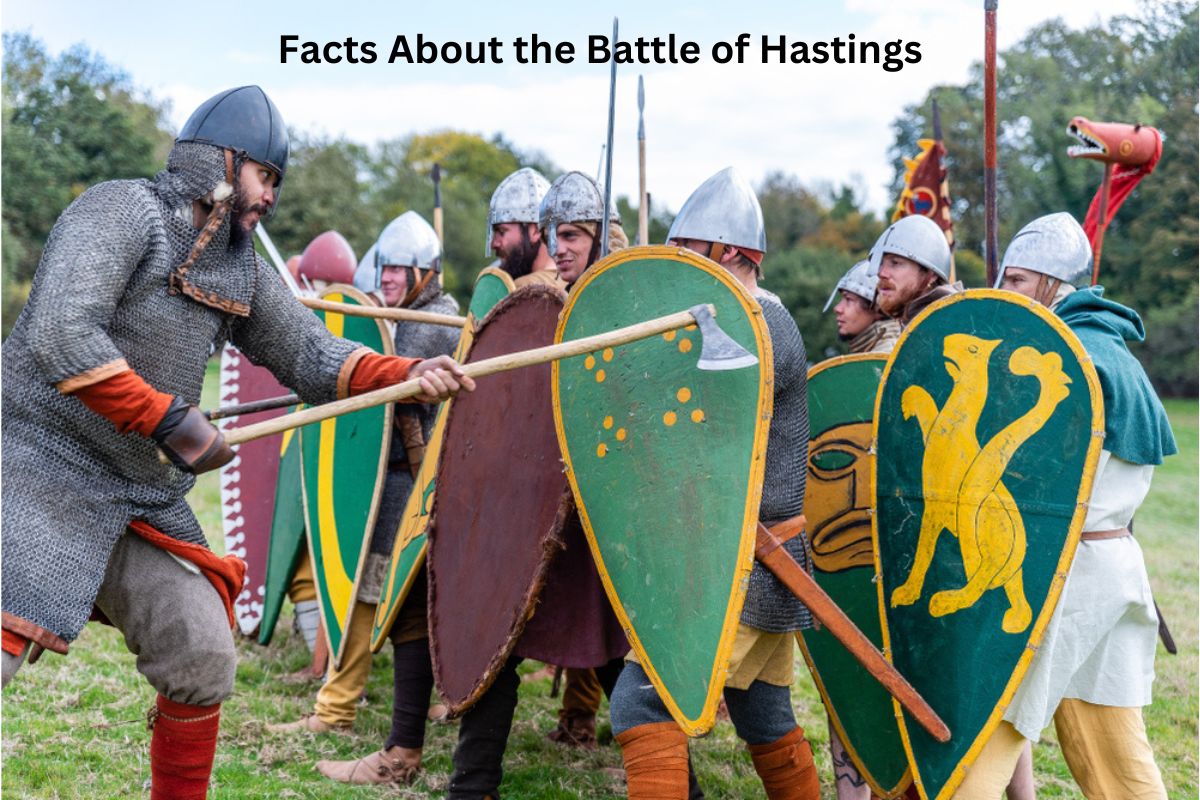The Battle of Hastings, a historic clash in 1066, was a pivotal moment in English history.
Fought between the Norman invaders led by William the Conqueror and the English defenders under King Harold II, it took place near Hastings, East Sussex, England.
This battle had profound consequences for the English monarchy and culture, ultimately leading to William’s coronation and the Norman Conquest of England.
The Battle of Hastings Facts
1. Fought in 1066
The Battle of Hastings occurred in the year 1066. It was one of the most significant and well-documented battles of the Middle Ages.
Also Read: Facts About the Bayeux Tapestry
This year is often remembered as a pivotal point in English history due to the Norman Conquest and the resulting transformation of England’s political, social, and cultural landscape.

2. Between Normans (led by William) and English (led by Harold)
The battle was a clash between two distinct groups. On one side were the Normans, led by Duke William of Normandy, who would later become known as William the Conqueror.
William claimed that he had been promised the English throne by King Edward the Confessor, and he sought to enforce his claim through military conquest.
Also Read: William the Conqueror Facts
On the opposing side were the English, led by King Harold II. Harold had been crowned king after Edward’s death, and he defended his right to the throne against the Norman invasion.
3. Near Hastings, East Sussex, England
The battle took place in the vicinity of Hastings, a town located in East Sussex, on the south coast of England. The specific location of the battle is often referred to as Senlac Hill or Battle Hill, which is approximately seven miles northwest of Hastings.
The choice of this location was strategic, as it allowed the English defenders to occupy a defensive position on higher ground, which they fortified with shields and formed a shield wall to repel the Norman attackers.
4. William’s claim to the English throne was the main cause
William’s claim to the English throne was based on his assertion that King Edward the Confessor had promised him the crown. According to Norman sources, Edward had designated William as his successor during a visit to Normandy.
However, when Edward died in January 1066, Harold II was crowned king by the English nobility, claiming that Edward had made him his heir on his deathbed. This conflicting interpretation of Edward’s intentions was a primary cause of the conflict.
5. King Harold II’s army marched from the north
After being crowned king, Harold II faced the daunting task of defending England against the Norman invasion.
He had to rapidly assemble and march his army from the north of England, where he had recently defeated Viking invaders led by King Harald Hardrada at the Battle of Stamford Bridge (September 25, 1066).
The journey from Stamford Bridge in Yorkshire to Hastings in Sussex covered over 240 miles and was accomplished in just over two weeks. This forced march weakened Harold’s forces both physically and strategically.

6. Battle lasted most of the day
The Battle of Hastings began on the morning of October 14, 1066, and continued for most of the day. It was characterized by intense and brutal combat.
The English defended themselves with a shield wall formation on the ridge of Senlac Hill, making it difficult for the Normans to break through.
7. Norman archers played a crucial role
The Normans, under William’s leadership, employed various tactics, including archers who fired volleys of arrows at the English shield wall. The battle saw multiple phases, with both sides experiencing significant casualties.
It wasn’t until later in the day that the Normans managed to exploit a perceived weakness in the English formation and break through, leading to the death of King Harold II and the ultimate Norman victory.
8. Harold II died during the battle
The exact circumstances of King Harold II’s death at the Battle of Hastings remain a subject of historical debate. The most famous account, found in the Bayeux Tapestry, depicts Harold being struck in the eye with an arrow.
However, this depiction may be symbolic rather than entirely accurate. Some sources suggest that Harold was killed by multiple attackers, possibly in hand-to-hand combat, as the Norman forces closed in on the English position.
Regardless of the specifics, his death marked a turning point in the battle and had significant implications for the English defense.
9. Resulted in Norman victory and William’s coronation
The Battle of Hastings ended with a decisive victory for the Norman invaders. After King Harold II’s death and the collapse of the English shield wall, the English forces were gradually overwhelmed by the Norman assault.
This victory led to William the Conqueror’s ascendancy to the English throne. He was crowned as King of England on Christmas Day in 1066 at Westminster Abbey, solidifying Norman rule over England and establishing the Norman dynasty.
10. The Bayeux Tapestry depicts the battle’s events
The Bayeux Tapestry is one of the most famous historical artifacts from the Middle Ages. It’s a 230-foot-long embroidered cloth that chronicles the events leading up to and including the Battle of Hastings.
Created in the years following the battle, it provides a visual narrative of the conflict, offering invaluable insights into the military tactics, clothing, weaponry, and customs of the time. The tapestry is currently on display in Bayeux, France, and is a UNESCO World Heritage item.
The Norman Conquest of England, which began with the Battle of Hastings, had profound and lasting consequences. It marked the end of Anglo-Saxon rule in England and ushered in a new era of Norman influence.
The Normans introduced significant changes to English society, culture, and language. Norman French became the language of the ruling elite, while Old English continued to be spoken by the common people.
This linguistic fusion eventually gave rise to Middle English. The Norman rulers also introduced feudalism, centralized administration, and a new aristocracy of Norman descent, which fundamentally transformed the political and social structure of England.
